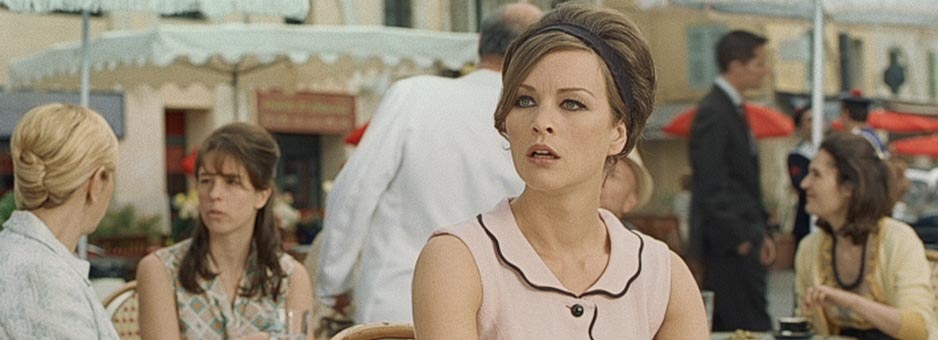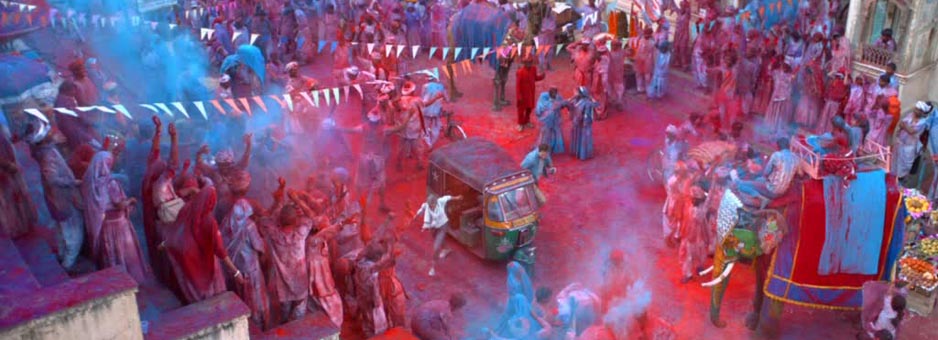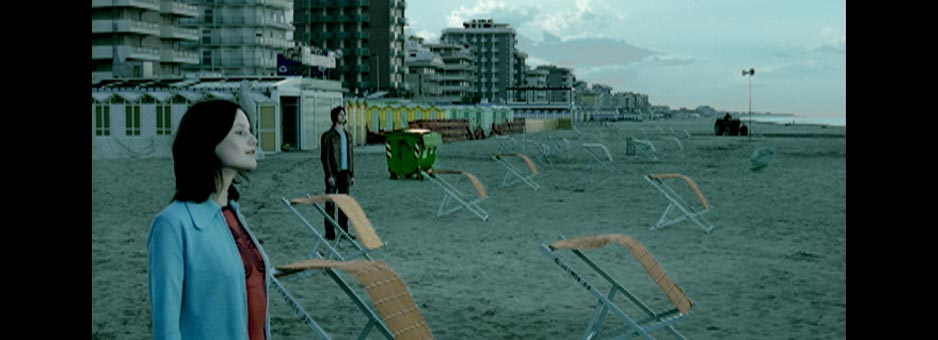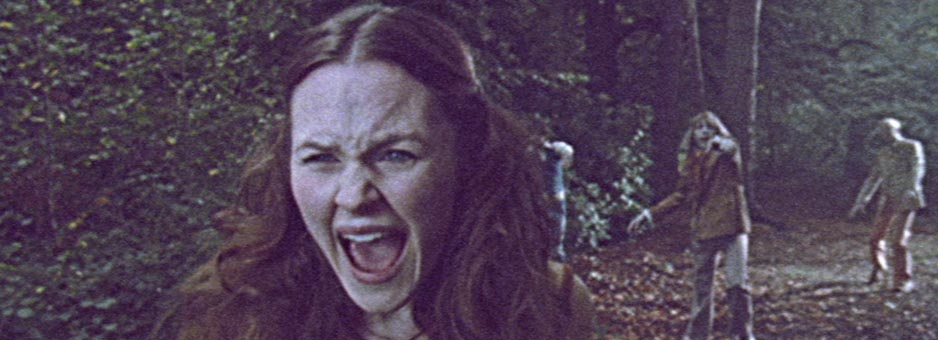Meet The Colourist
Steffan Perry
Head of Telecine, Framestore
Today we are talking with Steffan Perry, Head of Telecine at Framestore, about his passion for colour and how he got started in the world of post-production. First recognised for the commercial Breath.com, which went on to be nominated for a BTTA award, Steffan recently graded Framestore's ground-breaking Galaxy Chauffeur commercial which, through its use of pioneering VFX techniques, brought Audrey Hepburn, the big screen beauty icon of the 50s and 60s, back to life.
How did you start out in post?
We covered an advertising module in a business course I took when studying at college in Southampton. The creative side of advertising really grabbed my attention. It was the first time in my life that I had a gut feeling that a "proper" job lay in wait.
I started running at Dean Street Post, my sister’s friend was head of bookings, that was my first break. I didn’t mess up in my trial week and was literally running to the florist and Bar Bruno from then on.
Nowadays runners have really impressive CVs; back then a foot in the door and a good work ethic was all you needed.
How did you get into the job as a colourist?
After three months of fetching hot turkey escalope with cheese baps (very popular back then for some reason), emptying huge ashtrays, and supplying a lot of booze from our pretty impressive bar, I discovered the Avid. Over the next six months I played a lot with footage stored locally, and then took in a few projects myself. At this juncture the TK department of Max Horton, Christine Trodd and Asa Shoul asked if I wanted to learn the dark art of grading.
It was the luckiest break I’ve ever had.
Life was starting at 5.30am watching one light transfers of Thomas the Tank Engine shot on 35mm.
In 1997 I got the job as dailies grader at Framestore for the numerous American TV features that you can still watch around holiday times, Alice in Wonderland, Merlin and Arabian Nights. About 18 months later Gary Szabo was substituted for my infamous college Dave “Luds” Ludlam. At this time I started to get into daytime and evening requests for promos and low budget ads.
What gives you a buzz about colour?
The importance of palate, saturation and density, shape and texture on images is massive. As a grader I can visually help a picture convey the emotions that the director wants to unlock in a viewer.
I love to reminisce about trends of colour and grading techniques. From the chocolate box twee grades, with loads of contrast, everything warmly washed and a 3.5 promist over it, to the K-scoped (blurred) imagery of the late 90s, the green shadows and duo tone grades over the early 00s, and into the “luma grade” phenomenon where shadows never touched video black, and everyone started to refer to the look as “filmic”.
All of those approached were in vogue at the time, relevant and beautiful in their own way (apart from K-scope - those were indeed misguided days).
My job keeps me on my toes. Abusy week can mean I could be starting, reviewing, and finishing up to 10 spots in a week, each requiring an approach to colour that can be a test of my ability to fulfil the brief by using an amazingly versatile system.
What sort of jobs do you work on?
Mainly commercials, across all sectors, and the odd pop promo. I love working on short films. I like to be able to give back something to a director, and sometimes you can have more freedom and you don’t necessarily have the extra options of a client to consider.
What makes for a good day at the desk?
I just finished grading three beautifully crafted spots shot on the Alexa Studio with anamorphic lenses with Tom Connelly (Another Film Co). We had a great session swapping Arsenal-related anecdotes, grading, adding grain, and then the clients came in and didn’t want to change a thing. That’s like a perfect day.
However, a great day for me can be a conquest, winning over a client’s trust, bringing something “to life”, or being put out of your comfort zone and asked to fulfil a brief that you feel instinctively isn’t the right way to go. Colour is so subjective. Most approaches aren’t wrong; they are just different. A beautiful piece can be enhanced in many ways, but sometimes the client / director wants to push through a different aesthetic.
It’s great when a director wants me to go with my gut, as they like “my look”, and then make small changes. But as happened a few weeks ago, the director put an arm on my shoulder and said, “The preparation you have done for this job, albeit beautiful, is not how I want this film to feel. We start again.” In the end the spot was flatter in contrast, and not as colourful as I envisaged; however, both looked lovely, and they both had their merits. The session was a little tough to begin with, but there were man hugs all round at the end. That’s a great day.
I have loved the challenges of my first year on Baselight - it’s so versatile and fast. It enables me to approach a grade from so many angles, the tracker is fantastic, and I’ve really enjoyed seeing the Flame boys' faces when they watch what we can achieve now.
I’m having lots more great days now I’m pleased to be able to say.
What is the best project you have ever worked on? And why?
Breath.com was a breakthrough spot for me. It was the first of my BTAA nominations and helped transform my reel. As soon as it was on my reel, directors were happy to work with me.
There was a slight change happening in grading at the time, people were beginning to not ask for everything to look like Amelie, but references started to include Breathe. Working with Frederic Planchon at that time for me was huge, his work is amazing, and he pushed me and got the best out of me at the time.
I recently graded the Audrey Hepburn Galaxy spot, which was great for a different reason. Grading a new pipeline via Nuke, including EXRs, alpha channels, viewing LUTS, not CMS, grain, tracking, for me there were a lot of breakthroughs.
I love film prints, and I love to work on jobs that attempt to replicate a projection print from yesteryear with all the beautiful imperfections.
A Samaritans job called “Zombie” was great fun, and I’ve been lucky enough to grade a few Stella spots, with beautiful art direction and experimental grades from running the 35mm neg in Print mode, add some weave, some black dust and a few scratches. Heaven.
How much of a part does technology play in the way you work?
Baselight allows me to drive the systemin so many ways, from simple conventional grades, to mixing grades together, retrieving detail, or heightening areas by tracking or multi point shapes. Technology had stifled my creativity before Baselight - I just didn’t realise.
Dave, Simon and myself have over 15 years grading experience each, but its great to be in a department where we are all exploring and finding out new techniques and approaches to grading.
I love to push the kit. My brain has been working overtime this last year, I’m problem solving things that may have gotten me stumped earlier in the day. My grades have to be cut according to the cloth sometimes, how long the session is and what the brief is. If something is to look “real” like “digi-beta linear” real, or 16mm “urban real”, but a lot of the time we break the signal striving to get a hyper real, or surreal look.
The further you go along that list the more investigating and pushing you need to be open to.
What are the current challenges in getting the look you want?
Grading something that has been lit completely flat to preserve all detail and being asked to relight something, it’s no quick fix, and in commercials we have limited time to create the look and ensure continuity let alone try to relight something.
Also, references can be problematic at times to match. Clients can be referencing the same tiff on their laptop that has the brightness turned up to maximum, and when the same tiff is shown on my Dolby monitor it looks pretty different.
The world of monitor setups, different internet browsers, player colour profile differences, laptops, iPads, etc has taken over and magnified the reference point problem from the days when a Umatic / VHS was viewed on someone’s TV set to "live" mode. Getting the desired look is easier when everyone is in the same suite at the same time, viewing the same monitor.
Do you find the new generation of "raw" cameras gives you more control?
Working from the raw files gives us the confidence that we have all the detail at our disposal. It reminds me of the flexibility that working straight from negative used to give us.
It will be interesting to see the F55 raw. Using the different gammas on the F65 reminded me of playing around with the filtering options on the Spirit 2, giving a different starting point, and that could be very advantageous in creating a look.
Working with the Red Rocket does again help if we want to get rid of any unwanted bias as a starting point, however I think most of the time if I've got a DPX with a bias, I'll just grade it out.
Our Data Lab liaises with production before shoot to advise on the optimal workflow, especially with new cameras and technology.
We recommend to monitor Alexa and cut with the Rec 709 LUT. Don't get comfortable with Log-C - it’s not a "look".
We've seen a massive drop off like everyone else has. A job every six weeks if we're lucky.
Directors will choose film, budget-dependent, because it’s such a beautiful medium. A job like San Miguel (A Life Well Lived, dir Daniel Wolfe) is a perfect example of why you should shoot on film, it’s just beautiful.
There are great digital cameras out there now, and with the ability to add grain, half the time we are trying to make the spot look as though its been shot on film. The good old days of shooting out to Bleach Bypass or low-con prints are surely missed; only occasionally do we explore these avenues.
I have a beautiful wife and two beautiful children, Lily-Rae, eight, and Henry David, seven. I love to spend time with my family, going bowling, playing football, or just cuddling up on the sofa. The children are at a wonderful age, and I want as many kisses and hugs before they think it’s not cool to show those emotions so freely.
I have found myself enjoying gardening over the last few years and I love to spend the day pruning, edging, and planting, then to have a beer or two and a BBQ and sit back and take in the day’s work.
My lifelong passion has been sport and I'm a lifelong Arsenal fan. I'm a glass half full man and believe next season we can seriously win the league.
The one sport I still play is golf. I love the fact that after nine holes you think you've cracked the game, and then you're brought back to earth on the back nine and you can't play for toffee. Being away from the hustle and bustle of city life relaxes me.

“I have loved the challenges of my first year on Baselight - it’s so versatile and fast.”
Details
Colourist: Steffan Perry
Role: Head of Telecine
Company: Framestore, London
w: www.framestore.com








